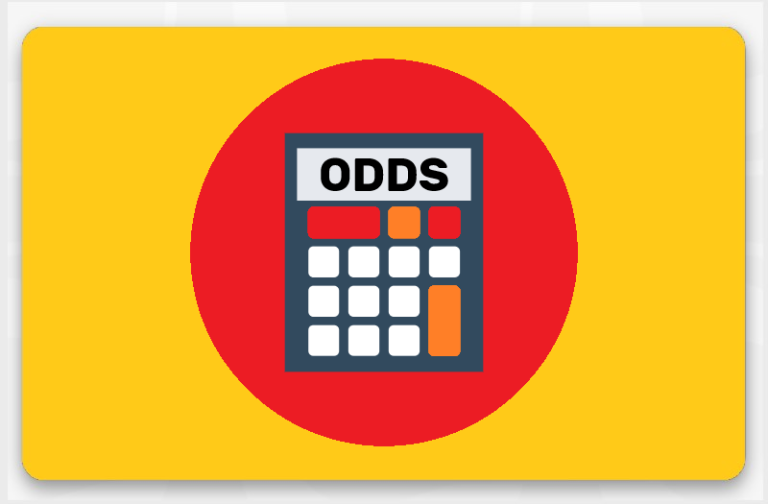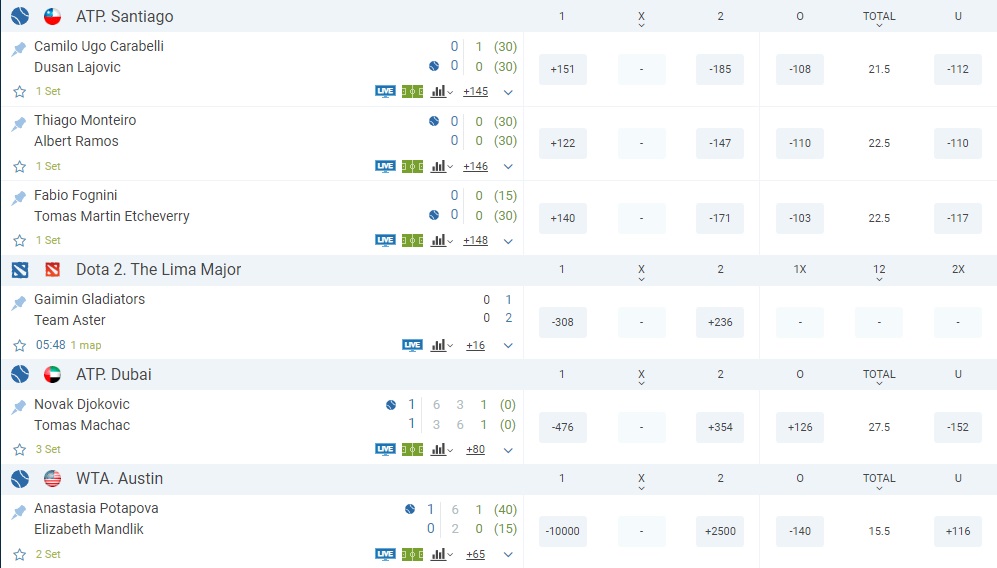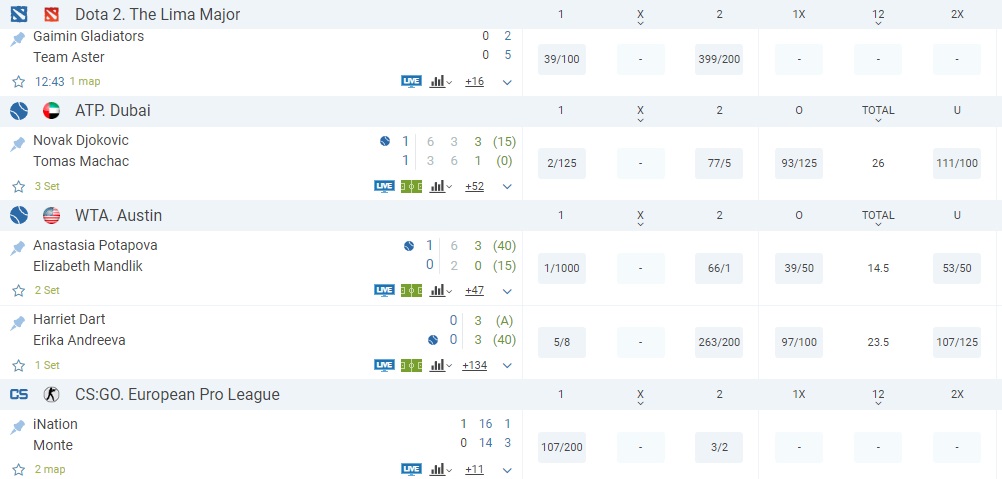
Welcome to our guide on “How to convert every sort of bet.” This tutorial will discuss numerous ways of converting various types of bets, including single bets, multiple bets, and system bets. We will also explore the advantages and disadvantages of each strategy and provide examples to assist you to comprehend the procedure. Whether you are a seasoned bettor or new to the world of sports betting, this guide will give you the knowledge and tools you need to place confident wagers. So let’s get started!
How to read sports betting odds?
Reading sports betting odds may appear intimidating at first, but if you learn the fundamentals, it is fairly straightforward. Odds are a technique for bookmakers to communicate the probability that a specific outcome will occur in a given event.
There are three fundamental odds formats: American, decimal, and fractional. In the United States, odds are expressed as a positive or negative number, with a minus sign denoting the favorite and a plus sign denoting the underdog. For instance, if the American odds for a game are -150, you would need to wager $150 to win $100. Alternatively, if the odds are +200, a $100 wager would yield a return of $200.
Also known as European odds, decimal odds are expressed as a decimal number. To determine your possible profits while using decimal odds, multiply your wager by the odds. For instance, if the odds are 2.00, a $100 wager would yield a return of $200.

Decimal odds example
As a fraction, fractional odds, often known as British odds, are expressed. To determine your possible winnings with fractional odds, divide the second number by the first number, and then multiply the resulting amount by your wager. For instance, if the odds are 3/2, a $100 wager would result in a $150 payout.
In conclusion, when reading sports betting odds, it is crucial to comprehend the type of odds being utilized and to keep in mind that odds represent the potential payment for a certain wager.
With a little experience, you will be able to evaluate odds quickly and make intelligent wagering judgments.
Types of betting odds
There are numerous sorts of betting odds employed in the realm of sports betting. The most prevalent types of odds are:
- Moneyline odds. These odds are used to show the possibility that a particular team or individual will win a given event. Moneyline odds can be expressed in decimal, fractional, or American format.
- Point spread odds. The purpose of point spread odds is to balance the playing field between two teams that are not evenly matched. The spread for the favorite squad is negative, while the spread for the underdog club is positive. This allows bettors to wager on either team to win, regardless of how heavily favored one team may be.
- Totals odds. Also known as over/under odds, these odds represent the total score of a certain event. Bettors may wager on whether the total score will exceed or fall short of a specified figure.
- Futures odds. Futures odds are used to show the possibility that a particular team or player will win a championship or other long-term event. Futures odds are frequently released long in advance of the event and are subject to change as the event draws near.
- Prop odds. These odds are used to show the probability of a particular outcome or occurrence in a given event. Prop odds can be based on the performance of an individual player or team, as well as other variables such as the weather or the final score.
- Live betting odds. These odds are used to represent the probability of a particular outcome or occurrence during a live event. As the game develops, these are utilized to reflect the alteration of the game scenario and its outcome.
Understanding the various types of betting odds is vital for making well-informed wagering decisions. Also understanding how each sort of odds functions can assist you in making more informed wagering decisions.
What is an Odds Converter tool?
A tool that allows sports bettors to convert betting odds from one format to another is known as an odds converter. American, decimal, and fractional are the three most popular formats for odds. The application can convert between these odds formats, allowing bettors to evaluate odds from various sportsbooks and make better-informed wagering decisions.
The betting odd converter tool can be accessed online, typically on sports betting platforms, or as a mobile application.
They are typically user-friendly and straightforward, allowing you to convert betting odds with only a few clicks.
To use a tool for converting odds, you just enter the odds you wish to convert in the correct format and then choose the format you wish to convert to. The application will then display the converted odds, allowing you to compare odds from various sportsbooks and make educated wagering decisions.
Odds converter tools can be particularly helpful for bettors who are unfamiliar with a particular odds format or who wish to wager on international sporting events, as different countries may employ different odds forms.
To sum up, a handy tool for sports bettors is a betting odd converter that can change odds from one format to another, making it easy to evaluate odds from different sportsbooks and make educated wagers.
What is an Odds Conversion Table
A table of odds conversions is an invaluable resource for anyone involved in sports betting or gambling. The table facilitates the bet conversion of odds from one format to another, making it simple to comprehend and compare odds from various bookmakers and sportsbooks.
There are numerous methods for presenting odds, including fractions, decimals, and American odds.
In the UK, fractional odds are the most common means of expressing odds and are frequently used in horse racing and other sports. In contrast, decimal odds are utilized more frequently in continental Europe and are gaining popularity in other parts of the world. American odds, often known as moneyline odds, are frequently employed in North America.

A table of odds conversion can assist in converting odds from one format to another. If a person is more accustomed to decimal odds yet encounters fractional odds, the table can be used to convert fractional odds to decimal odds. This might be especially helpful for individuals who are new to sports betting or gambling and are unfamiliar with the various odds presentation formats.
In addition, an odds conversion table can be utilized to evaluate the odds offered by various bookmakers and sportsbooks.
This is useful for locating the greatest odds for a specific wager. If a person is interested in betting on a football game and wants to discover the best odds, they can utilize an odds conversion table to evaluate the odds offered by various bookmakers. This can assist them in locating the greatest odds and boost their chances of winning.
Converting odds manually
Manually converting odds is the process of converting odds from one format to another without using an odds conversion table. This method can be handy for those who are familiar with the various odds presentation formats and wish to convert betting odds manually.
To manually convert odds, it is essential to understand the various odds presentation formats. Common odds formats include fractional, decimal, and American.
The ratio of the potential payoff to the bet is how fractional odds are expressed.
For example, odds of 3/1 indicate a potential payoff of 3 units for every unit wagered. Simply add 1 to the fraction and divide the numerator by the denominator to convert fractional odds to decimal odds. For example, odds of 3/1 would convert to odds of 4.00.
The ratio of the prospective payoff to the bet, including the bet, is how decimal odds are expressed. For example, chances of 2.00 indicate a potential payoff of 2 units for each unit wagered (1+1). To convert decimal odds to fractional odds, subtract 1 from the decimal followed by dividing by the decimal. For instance, odds of 2.00 converted to fractional odds of 1/1.
American odds, commonly known as moneyline odds, indicate the amount that must be wagered or won to win $100. Positive numbers show the amount wagered to win $100, and negative numbers indicate the amount earned for a $100 wager. To convert American odds to decimal odds, divide the American odds’ absolute value by 100 and then add 1. -200 American odds would convert to 1.50 decimal odds, for example.

American Odds Example
Noting that manually converting odds can be more difficult than utilizing an odds conversion table, it is advisable to be conversant with the different formats before attempting to manually convert betting odds. In addition, while the preceding examples serve as a broad guide, the precise conversion of chances can vary depending on the context.
Implied Probability Explained
In gambling and sports betting, the implied probability is used to represent the possibility of an event occurring. It is computed by expressing the reciprocal of the chances as a percentage. Implied probability can be used to assist individuals to comprehend the likelihood of a given event occurring and make more informed wagering decisions.
For instance, if the chances of a team winning a football match are 2/1, the implied probability is 1/(2+1) = 1/3 = 33.33 percent.
This indicates that, based on the odds, the team has a 33.33 percent chance of winning the match.
It is vital to remember that the inferred probability and the actual probability of an event occurring are not identical. The implied probability is derived from the odds provided by the bookmaker or sportsbook, which may not reflect the event’s actual probability. In some instances, variables such as public opinion or the bookmaker’s projections may influence the odds, causing the suggested probability to diverge from the true likelihood.
When converting odds to implied probability, it is also crucial to consider the odds’ format. It is possible to calculate implied probability using fractional, decimal, and American odds. The formula for converting odds to implied probability varies between formats. To translate fractional odds, for instance, you divide the numerator by the denominator and the sum of the two, and to convert decimal chances, you divide 1 by the decimal odds.
How to Convert Fraction Odds to Decimals
Converting fractional odds to decimal odds is a basic mathematical operation that can be advantageous for individuals who are accustomed to one format but encounter odds provided in the other type. In the United Kingdom, fractional odds are more prevalent in horse racing and other sports, although decimal odds are more prevalent in continental Europe and growing in popularity elsewhere.
Simply add 1 to the fraction and divide the numerator by the denominator to convert odds to decimal. To convert odds of 3/1 to decimal odds, for instance, you would add 1 to the fraction (3/1 + 1 = 4) and then divide the numerator (3) by the denominator (1) to obtain 4.00.
Another way to convert fractional odds to decimals is by dividing the denominator by the numerator and adding 1 to the result. For example, 3/1 would be 1/3 +1 = 1.33.
Note that when fractional odds are converted to decimal odds, the resulting decimal odds do not contain the initial stake. This indicates that decimal odds will be slightly greater than fractional odds. For instance, 3/1 fractional odds convert to 4.00 decimal odds, which is greater than the fractional odds.
In addition, it is essential to note that while the preceding examples serve as a basic reference, the actual conversion of odds may vary based on the context and format of the odds.
How To Convert Decimal Odds To Fractional
Converting decimal odds to fractional odds is a basic mathematical operation that can be advantageous for individuals who are accustomed to one format but encounter odds provided in the other type. In continental Europe and other parts of the world, decimal odds are more prevalent, while fractional odds are more prevalent in the UK, particularly for horse racing and other sports.

UK Odds example
Simply subtract 1 from the decimal and divide the result by the decimal to convert decimal odds to fractional odds. To convert odds of 2.00 decimal odds to fractional odds, for instance, you would remove 1 from the decimal (2.00 – 1 = 1) and then divide the result (1) by the decimal (2) to obtain 1/2.
Alternatively, the decimal can be expressed as a fraction by using the decimal as the denominator and 1 as the numerator. For instance, odds of 2.00 converted to fractional odds of 2/1.
When converting decimal odds to fractional odds, the fractional odds do not include the initial stake. Therefore, fractional odds will be slightly lower than decimal odds. For instance, 2.00 decimal odds convert to 1/2 fractional chances, which is inferior to the original decimal odds.
How to Work Out Implied Probability From Fractional Odds
The approach of calculating the implied probability from fractional odds might be useful for individuals who are familiar with fractional odds and wish to determine the possibility of an event occurring. In gambling and sports betting, the implied probability is used to represent the possibility that an event will occur; it is computed by taking the reciprocal of the odds and expressing the result as a percentage.
To determine the implied probability from fractional odds, divide the numerator by the sum of the numerator and denominator.
For instance, if the odds are 3/1, then the implied probability is 3/(3+1) = 3/4 = 0.75 or 75%. This indicates that, based on the probabilities, the event has a 75% chance of occurring.
It’s crucial to keep in mind that the inferred likelihood of an event’s occurrence is not the same as the true probability of that event’s occurrence.
The odds posted by the bookmaker or sportsbook are used to calculate the implied probability, which may or may not be reflective of the true likelihood of the event. The odds may deviate from reality if the bookmaker takes into account factors such as popular opinion or their estimates.
How to Work Out Implied Probability From Decimal Odds
The approach of calculating implied probability from decimal odds might be beneficial for those who are more comfortable with decimal odds and wish to determine the chance of an event occurring. In gambling and sports betting, the implied probability is used to represent the possibility that an event will occur; it is computed by calculating the reciprocal of the odds and expressing the result as a percentage.
To calculate implied probability from decimal chances, divide 1 by the decimal odds and multiply by 100.
For instance, if the odds are 2.00, then the implied probability is 1/2.00 = 0.50 x 100 = 50%. According to the chances, there is a 50 percent probability that the event will occur.
When the decimal odds are less than 2, the implied probability will be more than 50%, but when the decimal odds are greater than 2, the implied probability will be less than 50%.
Why is it crucial to understand betting odds?
Anyone who participates in sports betting or gambling must understand betting odds. Betting odds are figures or ratios that show the probability of an event occurring as well as the possible payoff for a winning bet. Knowing how to read and comprehend betting odds may help a person make more educated wager selections, thereby increasing their chances of winning.
One of the key reasons why understanding betting odds is important is that they may assist a person to evaluate the possible payment for a successful bet. For example, if the chances for a team winning a football match are 2/1, a $100 wager on the team winning would result in a $300 payoff (2 x $100 Plus $100). Understanding betting odds may assist a person in determining the possible payment for a wager and determining if the prospective reward is worth the risk of the bet.
Another reason why understanding betting odds is important is that they may assist a person to evaluate the chance of an event occurring.
The implied probability, which is computed by calculating the reciprocal of the odds and representing the result as a percentage, is known as this. For example, if the odds of a football team winning are 2/1, the implied probability of the team winning is 1/(2+1) = 1/3 = 33.33%. Knowing the implied probability can assist a person in determining the likelihood of a specific event occurring and making better-educated judgments regarding their bets.
Furthermore, knowing betting odds can assist a person in comparing odds from several bookies or sportsbooks.
This might be useful for determining the optimum odds for a certain bet. For example, if a person wants to wager on a football match and get the best odds, they might evaluate the odds from many bookies. This can assist them in locating the greatest odds and thus increasing their chances of winning.
FAQ
The best odds comparison site will differ based on the sport or event on which you are wagering. Oddschecker, Bettingexpert, and Bestbettingsites.com are some prominent odds comparison websites. To discover the greatest chances for your wager, visit various comparison sites and compare the odds.
There are several bookies accessible for comparing betting odds. Pinnacle, Betfair, Bet365, William Hill, Unibet, and Ladbrokes are some of the most popular bookies. To discover the best odds for your specific bet, compare odds from several bookies.
You may use an odds comparison service or manually compare the odds from several bookies to compare odds. When evaluating odds, it is critical to evaluate the format of the odds and convert them to a format with which you are more familiar. Furthermore, you should weigh the possible reward for a winning bet against the implied chance of an event occurring. You can get the best odds for your bet and maybe boost your chances of winning by comparing these elements.
Last updated on 28 Feb 2023 - 20:25
















